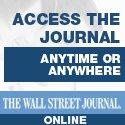Equity markets throughout the Middle East and North Africa - a group that has been labeled ‘MENA’ - have been outpacing global equity markets in recent months, despite low volumes. However, seldom if ever do we hear about the ‘MENA’ acronym or what goes on in that region, barring military actions. This might simply be a result of the out of sight and out of mind phenomenon but wait a minute - how is it that we still hear about the BRIC (Brazil, Russia, India, China) countries and the oft associated two words ‘booming economies’? If one were predisposed to investing globally wouldn’t it make sense to explore all your options and not simply restrict yourself to Brazil, Russia, India, China? Well, here at Investing Thesis we’re always thirsty and welcoming of new information and opportunities to broaden not only our horizons but perhaps our bank accounts too. Thus, we are extremely excited to present to you out interview with someone who has extensive equity research experience covering the MENA region.
Biography: Maria-Gabriella Khoury, CFA is SectorHead of LUSIGHT’s GEMS Consumer team, and oversees LUSIGHT’s coverage of theMiddle East, the Gulf and North Africa. She graduated from McGillUniversity with a Bachelor of Commerce degree and later received her MBA degree from HEC Montreal. Maria-Gabriella is a CFA charter-holder. Maria-Gabriella has extensive equity research experience covering the MENA region which she gained while working for the Atlas Investment Group and Jordinvest.
Q: Maria , why don’t you begin by telling us the regions/countries that fall under the ‘Middle East’ moniker? To follow-up, on an economic (and demographic) basis can you please enlighten us on some of the specifics of this region as opposed to the mature western economies or even the BRIC countries?
A: The term Middle East actually refers to three distinct regions, two can be grouped under the Middle East and North Africa (MENA) moniker and the third is the Gulf Cooperation Council (GCC). MENA includes exchanges in Egypt, Jordan, Lebanon, Morocco, the Palestinian Territories, and Tunisia while GCC includes markets in Bahrain, Kuwait, Oman, Qatar, Saudi Arabia, and the United Arab Emirates. These markets vary widely in terms of maturity, for instance the Alexandria Stock Exchange (in Egypt) can trace its roots back to the late 1800s while the Qatar Exchange only began formal activities in the 1990s. There is a broad spectrum of companies that are listed in these markets but the most predominant sector is banking. Investors should note though that each market has a different set of rules and limitations on foreign ownership. What I would say differentiates these exchanges from mature, or even other emerging markets, is the way in which they react to global events. Unlike BRIC exchanges which are becoming more and more affected by foreign stimuli, Middle Eastern markets would tend to react more, or let us say faster, to local or regional happenings versus international incidents.
Q: How did Middle Eastern countries weather the most recent 2008-09 recession? Furthermore, how dependent are the countries in the Middle East dependent on monetary/fiscal stimulus and oil and gas (commodities) prices to fuel economic growth?
A: Although it took almost six months for Middle Eastern countries to begin to feel the impact of the most recent recession, each economy was affected but in different ways. The MENA economies who have little or no oil/gas reserves felt the effects of the recession quickly and the recovery has been slow. Economies such as those of Egypt and Jordan who are more reliant on tourism and the export of commodities such as cotton, phosphates and potash are still trying to stimulate growth using monetary and fiscal policies. On the other hand, the effects of the recession on GCC (Gulf Cooperation Council) economies was less pronounced as these countries, whose main revenue source is oil and gas, were still being driven by the high oil prices of 2006 and 2007. The GCC countries had embarked on many infrastructure projects in the mid 2000s which during the recession acted as driver to allow these economies to still post positive growth in GDP. Despite the fall in oil prices similar new schemes are still being planned and announced, albeit at a more modest scale and pace and in smaller quantities.
Q: Have there been any moves either by the Gulf Monetary Council or any countries in particular towards a move away from pegging their currency to the US Dollar? What global implications do you think this might have should a move like this occur?
A: Countries in the Gulf Monetary Council have been talking about moving away from the US Dollar tie to a peg of a basket of currencies that includes the Euro for many years now. Kuwait has been the only country in the area to successfully do so in 2007. There is no definitive information about a similar move by other member states but in my opinion this would only likely happen if the price of oil stops being quoted predominantly in US Dollar terms.
Q: Maria, we’ve witnessed the banking systems in a numbers of developed economies falter recently, are there any systemic risks or vulnerabilities to the banking systems in the Middle East?
A: Banks in the region are closely monitored by systems that were put in place by their respective central banks which are mostly government controlled. This places more restrictions on Middle Eastern banks in terms of the areas of business in which they can operate versus their global counterparts. Nevertheless, we saw a few cases (particularly in Kuwait, Dubai, and Bahrain) where local banks who had financed non-sovereign real estate or other investment projects fell in the red and had to be either bailed out directly, forced into restructuring due to bankruptcy or given guarantees by the governments themselves who stepped in to act as backers for these projects. The reactions were swift but it did outline the vulnerability of local banks in terms of their large exposure to the regional real estate market, however, poor disclosure makes measuring the extent of the exposure very difficult.
Q: Compared to the rest of emerging markets, how do the Middle Eastern economies compare on a valuation/earnings basis?
A: Again, quite varied. You can see high double digit P/Es in a market such as Morocco while Kuwait enjoys single digit multiples, and this will be true across the board for most of the stocks that are listed on a particular exchange which could be misleading. This makes comparison to other peer groups quite difficult. As such I tend to put more weight on the actual valuation and the growth potential of a company rather than the multiples it trades at.
Q: Despite the economic concerns in the United States and Europe, there are still a number of opportunities for investors in the Middle East. What are some of the key sectors experiencing secular bull markets right now and forecasted to be above average growers in the future?
A: I would say the infrastructure and utilities sectors are quite attractive given all the projects that began to be implemented around 2005. The consumer sector is also moving ahead although at a slower pace than what is seen in other emerging markets, especially the BRICs. I believe, however, that in the future this sector should follow a similar trend to that experienced by the BRICs seeing as most of the countries in the Middle East have very young populations that should begin joining the work force in the next ten years thus driving growth and consumption even further.
Q: With regards to the emerging markets, can you please elaborate on the quality of disclosure in the different countries you focus on (relative to disclosure standards in North America) and provide us with a few examples of companies that do have good disclosure comparable to that of developed markets?
A: Good quality disclosure is still an issue in the Middle East but it is improving as more foreign institutional investors begin to take notice thus enticing companies to divulge more information. The situation is similar to that of Latin America in the early 2000s, and as we saw in those markets companies took long strides to organize and ameliorate the quantity, quality and frequency of their disclosures in order to attract and keep investors from developed markets. For example I have dealt with two companies which are very investor/analyst friendly and are consistent with the information they disclose, Kingdom Hotels of the UAE and Lecico in Egypt. Potential and existing investors can find plenty of reports and presentations on these companies’ websites.
Thank You, Maria!







